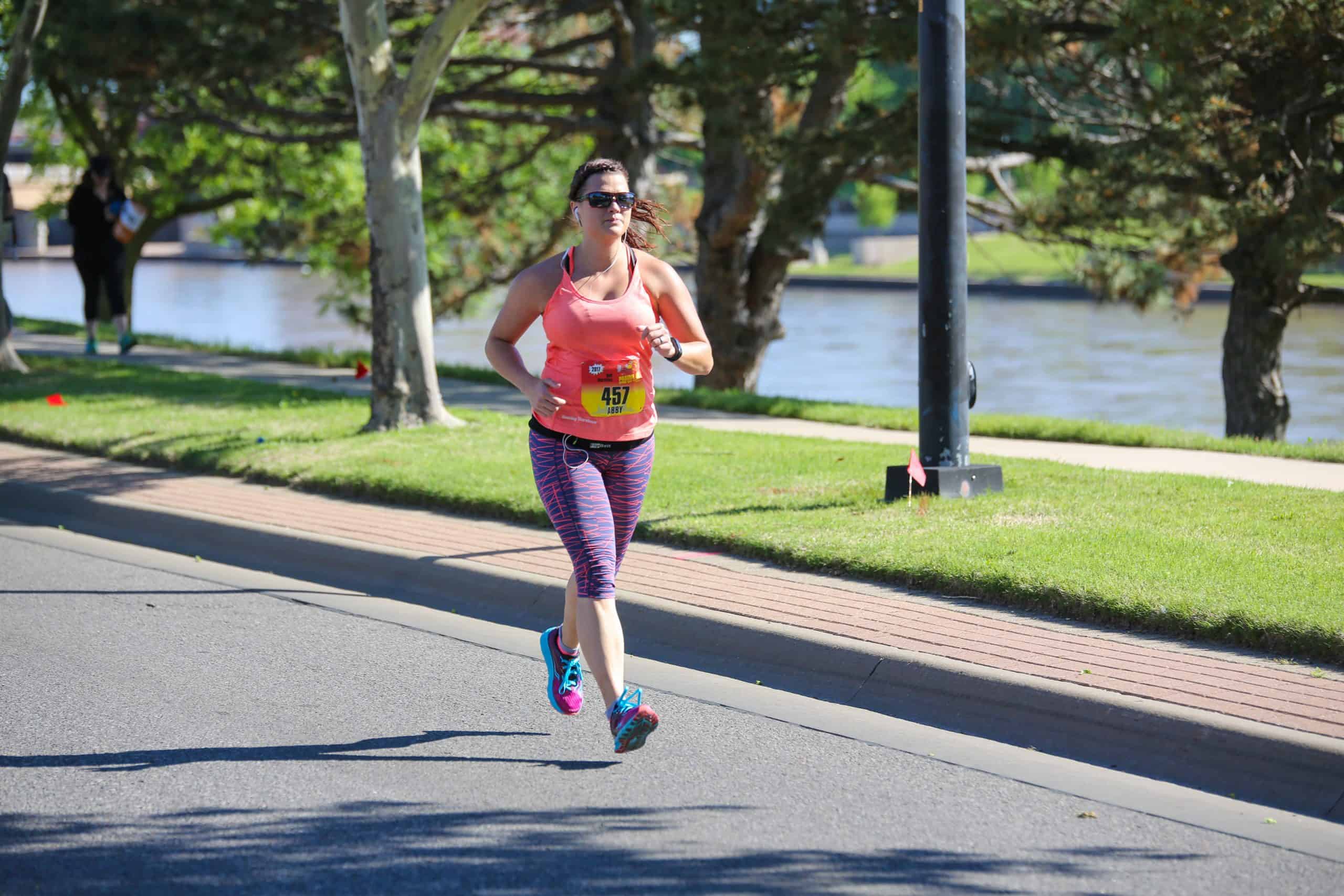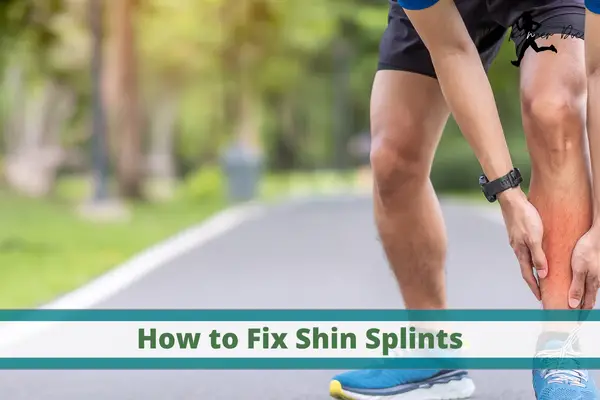How to Fix Your DEVASTATING Shin Splints {Run Pain-Free Faster}
Prevent Shin Splints Running
Do your shins hurt after running? Shin splints, or medial tibia stress syndrome, are a common injury for runners, but that doesn’t mean they have to sideline you for weeks on end. With the proper treatment and prevention strategies, you can be back on the road or trail in no time. Here are the most effective ways to fix your shin splints and get back to pain-free running.
When a runner or any athlete complains of anterior (front) shin pain it is automatically diagnosed as shin splints. However, shin splints is the more common term for medial tibia stress syndrome.
In this blog post, we’ll discuss what shin splints are, how to identify them, and how to treat and prevent them!
What is Medial Tibial Stress Syndrome?
Shin splints (medial tibial stress syndrome/MTSS) is a common injury among runners, but what exactly is it?
Shin splints refer to pain along the shinbone (tibia), typically on the inside edge of the bone. MTSS happens when too much stress is put on the lower leg bone or when the muscle next to the bone is overworked.
Shin splints often occur after sudden increases in mileage or intensity, poor running form, or worn-out shoes. More often than not they are a result of something else going on and more of a symptom than an actual diagnosis.

Bone Stress Reactions and Shin Splints
Shin splints that go untreated can often lead to stress fractures, as the overuse of already-inflamed muscles weakens the tibia. This weakening is caused by degeneration from extended use. Though shin pain may seem like something you can push through, training with this level of discomfort will only prevent your progress and cause months’ worth of sitting out from running.
I have a whole article on Bone Stress Reactions (stress fractures) that can help you dive deeper into this subject and know the difference!
What Causes Shin Splints
There are a few different things that can contribute to the development of shin splints. As I mentioned before, they are usually the result of something else going on instead of being a singular diagnosis.
There are three main biomechanical causes of shin pain for runners. But really, the main reason runners develop medial tibial stress syndrome, is due to overtraining. Biomechanical factors, such as the ones listed below, will cause problems for sure. But the main thing that causes almost all running injuries is overtraining.

The Three Main biomechanical causes of Shin Splints in Runners:
- flat feet or low arches, your feet may roll inward too much when you run. This overpronation can lead to shin splints because it puts extra stress on the muscles and tendons in your lower legs.
- weak muscles in your calves and ankles, they may not be able to absorb the impact of running as well, which can also lead to shin splints.
- wearing shoes that are too worn out or don’t provide enough support, this can also cause shin splints. This is not saying that you need to get specialized shoes that are supportive or for a certain type of foot. Those really have very little effect or research behind them showing that they help. That’s another topic for another day though.
How to Avoid Shin Splints When Running
The best way to avoid shin splints, or any running injury for that matter, is by slowly increasing your mileage and giving your body time to adapt.
If you’re just starting out, aim to increase your mileage by no more than 10-20% each week. This may seem like a really slow build-up, but it’s much better to go slow and steady than to try to do too much too soon and end up sidelined with an injury.
In addition to mileage, focus on building up the strength in your legs with regular strength training. This will help you avoid shin splints by making sure your muscles can handle the impact of running and keeping your feet and ankles stable.
Finally, make sure you’re wearing shoes that fit well and provide enough support. This doesn’t mean you need to go out and buy a pair of expensive running shoes, but you do want to make sure your shoes aren’t too worn out and that they fit properly.
If you start to experience shin pain, don’t ignore it! The sooner you address it, the sooner you can get back to pain-free running.
How to Fix Shin Pain While Running
If you are experiencing shin pain, there are a few things you can do to help speed up the healing process.
First, cut back on your mileage and intensity levels until the pain goes away. Cut back, don’t stop. Only stop running if you aren’t able to run any amount of time or distance with less than a 5/10 pain. Sometimes you might need to take a few days off completely to get to this point.
Second, use ice to help reduce swelling and pain. Ice for 20 minutes, several times a day.
Third, seek medical help from a physical therapist, they are going to be your best bet to figuring out what is actually causing the shin splints biomechanically.
Fourth, work on your deficits. Figure out where you need to strengthen and improve mobility to address the issue. This is where an experienced Physical Therapist can come in very very handy!
Finally, make sure you are staying on top of your nutrition! People tend to overlook nutrition when they are injured.
The Best Exercises for Shin Splints
The first thing you need to do after you have gotten the pain under control is to figure out where the pain is stemming from. This is usually a combination of tight calf muscles, weak lower leg and ankle muscles, and inefficient strength of muscles higher up in the body such as the knees, hips, and core.
There are a few specific exercises that can help to strengthen the muscles around your shins and prevent shin splints.
Toe Yoga for Shin Pain
Wall sit Soleus Raise for Shin Pain
Seated banded ankle eversion
Dorsiflexion with Resisted Hip Flexion (single leg marches)
Soleus Wall Stretch for Sore Shins from Running
These are all specific to the ankle and calf region. However it is important to work on hip strength and stability as well. A great resource for these exercises would be working on these important muscles for runners.
Remember, runners can’t just run. A well rounded program that includes strength training, rest and nutrition is vital!
Shin Splints Recovery Time
The amount of time it takes to recover from shin splints varies from person to person. It depends on the severity of the injury, how well you follow your treatment plan, and whether or not you have any underlying issues that are contributing to the problem. In general, most people will need at least a few weeks to see significant improvement.
Keep in mind, the longer you have been dealing with the issue the longer it takes to recover!
Sometimes it can last for a few weeks up to several months.
Also, shin splints can be a recurring issue. Especially if you don’t get the root cause fixed the first time. Or if you don’t follow through and maintain your body!
If you’re experiencing shin pain, don’t wait to get it checked out. The sooner you start treatment, the sooner you’ll be able to get back to running pain-free!
Shin Splints…Can I Still Run?
If you are experiencing shin pain, the best thing to do is cut back on your mileage and intensity levels until the pain goes away. Notice that I said cut back and don’t stop.
So the answer is usually: Yes you can run if you have shin splints or medial tibial stress syndrome.
The rule is you must be able to run with less than 5/10 pain that doesn’t linger for more than 24 hours!
If you can run 3 miles with less than 5/10 but then the 4th mile it starts to creep up then you should stop at the 3 mile mark!
You don’t want to risk further injury by pushing through the pain. If it hurts, stop and/or modify.

Final Thoughts on How to Fix your Shin Splints for Runners
Shin splints can be a very frustrating injury, especially if you’re someone who loves to run. However, there are things you can do to help speed up the healing process and get back to your regular routine.
The best way to treat shin splints is by following a treatment plan that includes ice, rest, and strengthening exercises. It’s also important to focus on your nutrition and make sure you’re getting a balanced intake to help with healing.
If you’re experiencing shin pain, don’t wait to start treatment–the sooner you begin, the sooner you’ll be able to get back to running without any pain!
Related Articles to Shin Pain from Running
- Top Foot Strengthening Exercises for Runners: Keep Your Running Feet Happy!
- Should Runners Stretch Before a Run? It is a Waste of Time!
- Bone Stress Injuries in Runners: How to Prevent and Treat Them
AFFILIATE DISCLOSURE
As an Amazon Associate, I earn from qualifying purchases. This post may contain affiliate links. If you use these links to buy something we may earn a commission. The Site may contain links to affiliate websites, and we receive an affiliate commission for any purchases made by you on the affiliate website using such links.
All information should be used as a tool for more knowledge on the subject topic, to use as references for later articles where applicable, or just to keep it in mind during future exercise routines or activities.
This article is not meant to give medical advice or to replace professional health care. Should any ailment occur please contact your doctor or physical therapist immediately to keep yourself safe and prevent further damage.
The author is not liable for any personal or commercial damage directly or indirectly related to the content hereof. You are responsible for adhering to local laws and regulations regarding health & safety, including proper use of equipment or safety gear, and compliance with governing healthcare associations, and state, and federal regulations.
Sore Shins from Running

Dr. Abby Siler, PT, DPT is a Physical Therapist with 10 years of experience in a variety of settings. She has spent the majority of her time treating athletes in orthopedic clinics and worker’s compensation cases. She is a runner herself for the past 15 years and a lifelong athlete. Dr. Abby loves to teach runners how to stay injury free and out of her clinic.







